Fall 2025 Seminar Series
Seminars are Wednesdays at 4:00 p.m. in the Larrañaga Engineering Auditorium, Centennial Engineering Center unless otherwise noted, and are sponsored by CBE, BME, and NSME. Topical seminars are scheduled throughout the semester and can be used for seminar credit.
2025

December 3, 2025
Advancing multi-scale characterization of nucleic acids: Theory, computation, and design of DNA nanomaterials
William P. Bricker, UNM
4:00 p.m., Larrañaga Engineering Auditorium
Abstract: The Holliday junction motif in nucleic acids is utilized as a building block to create strand crossovers between duplexes of DNA, and repeated use of this motif allows the creation of large-scale wireframe structures in arbitrary 2D and 3D shapes, called DNA origami. In this talk, we investigate the properties of DNA at various scales, including electronic-level properties, sequence effects at the junction level, and overall dynamics of large-scale DNA origami assemblies. Accurate electronic structure calculations of DNA sequences are difficult-to-impossible due to extremely inefficient scaling of quantum chemical calculations as the system size increases. It is shown that a machine learning algorithm based on Euclidean neural networks, where the training data includes accurate electronic structure calculations of smaller fragments of DNA, namely, the relevant base-pair steps, can be utilized to reproduce the electron density of arbitrary DNA sequences to an error of less than 1%. Several future applications of these large-scale machine-learned electron densities are of interest, but require accurate calculation of forces and energies. As an example, accurate energy predictions of large-scale biomolecules could be utilized to predict the binding energetics of ligand-receptor complexes from first principles. At the molecular level, DNA junctions are utilized as the basic building block of DNA origami, but the base sequence effects on these junctions are not well understood. By utilizing classical molecular dynamics simulations, it is shown that changing the core sequence at the junction has a dramatic effect on the isomerization energies and dynamics of the Holliday junction motif. Additionally, higher-order DNA building blocks are being investigated such as DNA six-way junctions (6WJ) which can be incorporated into multi-dimensional DNA origami structures. We show that the isolated 6WJ has an extensive conformational landscape, and experimentally confirm that a square lattice built out of repeated 6WJs will fold. Alternative junctions such as heterochiral DNA junctions, where DNA switches chirality from right- to left-handed, are also being investigated for incorporation into larger DNA nanostructures. Left-handed DNA resists degradation in vivo, making heterochiral DNA an important platform for therapeutic applications. Finally, we will consider bioinspired energy transfer applications, as DNA origami can be utilized as a scaffold for photoactive molecules, with the goal of creating an efficient energy transfer network.
Bio: Prof. William Bricker is an Assistant Professor in the Department of Chemical and Biological Engineering at the University of New Mexico, starting in the Fall of 2019. He received his PhD in Energy, Environmental, and Chemical Engineering at Washington University in St. Louis in 2014, and continued his training as a postdoctoral associate in the Biological Engineering department at MIT from 2015-2019. His current research focuses on attempting to understand structure-to-function relationships in biology by utilizing tools from computational chemistry, with a focus on structural DNA nanotechnology, biological energy transfer, and platforms for therapeutic design.

November 19, 2025
Bioinspired Dynamic Materialization Toward Advanced Materials and Sustainable Manufacturing
Sungjin Kim, UNM
4:00 p.m., Larrañaga Engineering Auditorium
Abstract: A grand challenge in chemical engineering and materials science is to establish chemical processes that achieve both advanced materials performance and benchmarks for sustainability, energy/resource efficiency, and benefits to human and environmental health. My group's research initiative addresses these goals by investigating dynamic, bioinspired macromolecular materials for energy-efficient manufacturing, high-value applications, and critical resource recovery, based on mechanistic studies of organic, inorganic, and organic-inorganic solidification. Our work integrates advances from dynamic polymer chemistry, bioinspired mineralization, and additive manufacturing, enabling new strategies for polymer upcycling, CO₂ mineralization, and synthesis of functional organic-inorganic hybrids for energy, environmental, and healthcare applications. In this presentation, I will discuss how dynamic bond chemistries are employed to upcycle polymer waste into dynamic covalent networks that exhibit improved material properties and reprocessability. I will also discuss how controlled crosslinking through vat photopolymerization 3D printing of hybrid preceramic polymers can be employed to enhance ceramic yield and the quantitative correlation between the crosslinking and ceramic yield. Finally, I will discuss how organic-inorganic interaction engineering supports scalable CO₂ mineralization, converting undesired carbonaceous gases into higher-value materials with controlled size, morphology, and properties. The resulting advances provide a scientific and technological foundation for transformative materials manufacturing.
Bio: Dr. Sungjin Kim is an Assistant Professor in the Department of Chemical and Biological Engineering at UNM. He obtained his Ph.D. in Materials Science and Engineering from MIT as a Samsung Scholarship Fellow. He holds M.S. and B.S. degrees in Materials Science and Engineering from KAIST. He also studied at Georgia Tech as an undergraduate exchange student. Prior to joining UNM, he worked at ORNL as a research staff in Manufacturing Science Division, and before that, a postdoctoral scholar at Chemical Science Division. Before beginning his doctoral studies at MIT, he worked as a research engineer at SKC Co., Ltd., SK Group in South Korea. His overarching research interests include energy-efficient, bioinspired polymeric materials design and manufacturing strategies for better sustainability and healthcare. His research involves investigating physicochemistry of dynamic crosslinking, bioinspired mineralization and organic-inorganic interaction, and using these principles to produce desired 3D structures for industrial, environmental, and biomedical applications through additive manufacturing.
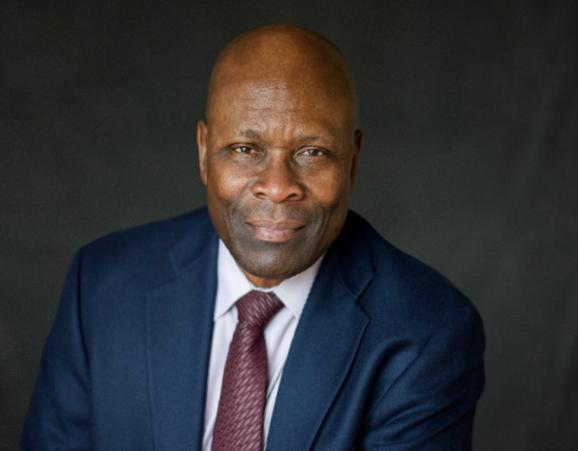
November 12, 2025
Organic Electronics: From OLEDs and Photovoltaics to Neuromorphic Computing
Samson A. Jenekhe, University of Washington
4:00 p.m., Larrañaga Engineering Auditorium
Abstract: Organic/polymer semiconductors have enabled a range of new technologies. In the case of organic light-emitting diodes (OLEDs), the materials and devices have reached commercial applications in full-color displays in smart phones and televisions and lighting. For solar cells or photovoltaics, advances in materials and devices have also substantially addressed the twin fundamental challenges of large-binding-energy excitons and narrow absorption bands in organic semiconductors. In particular, the journey from fullerene-based devices to non-fullerene acceptor (NFA)-based polymer solar cells has been long, challenging, and rewarding for the field of organic photovoltaics (OPVs). Recent advances in non-fullerene acceptor materials, donor copolymers and blend devices have pushed the OPV device efficiency past 20 %. Our recent advances in organic electrochemical transistors (OECTs) promise applications in bioelectronics and neuromorphic computing.
Bio: Samson A. Jenekhe holds the Frank and Julie Jungers Chair in Engineering, Professor of Chemical Engineering, and Professor of Chemistry at the University of Washington. He received his B.S. from Michigan Technological University, and his M.S. in chemical engineering, M.A. in Philosophy, and Ph.D. in chemical engineering (1985) from the University of Minnesota. Jenekhe’s research contributions are in the chemistry, physics, and engineering device applications of organic/polymer semiconductors, including materials synthesis, photophysics, charge transport, organic light-emitting diodes, organic electronics, and organic photovoltaics. He is the co-author of over 330 research articles in journals and 28 granted US patents. He received the 2014 Charles M. A. Stine Award for Excellence in Materials Science and Engineering from the American Institute of Chemical Engineers (AIChE). For his pioneering research on the photophysics and charge transport properties of semiconducting polymers, he was awarded the 2021 Polymer Physics Prize from the American Physical Society. He received the 2025 de Gennes Prize in Materials Chemistry from the Royal Society of Chemistry (UK). Jenekhe is a member of the National Academy of Engineering and a Fellow of the American Physical Society, the American Association for the Advancement of Science, and the Royal Society of Chemistry.
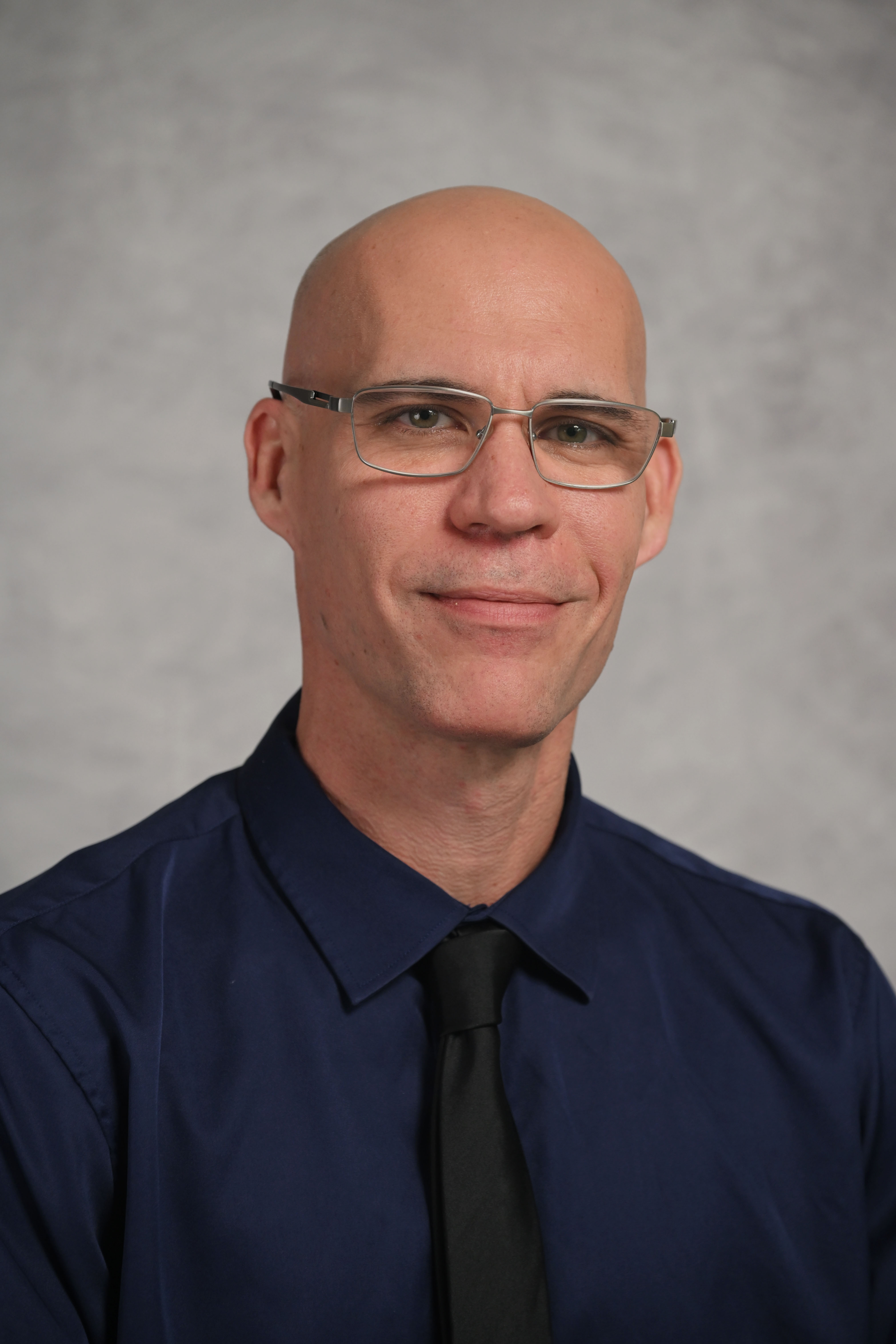
November 5, 2025
Toward Capturing Sex-Specificity in Human Microphysiological Systems
Mark J. Mondrinos, Tulane University
4:00 p.m., Larrañaga Engineering Auditorium
Abstract: Sex-specific cell culture methods and microphysiological systems (MPS) can enhance our understanding of how biological sex influences health and disease. Our laboratory has demonstrated baseline differences between female (XX) and male (XY) cells in numerous 2D culture and MPS bioassays when a common cell culture medium containing fetal bovine serum (FBS) is used for both sexes. Next, we began developing sex-specific culture methods based on culturing female (XX) cells with estradiol (E2) and male (XY) cells with dihydrotestosterone (DHT), the concentrations of which can be tuned to yield sex-equivalent baselines in select 2D and MPS bioassays. While we are actively developing more complex sex-specific hormone mixtures, including the addition of progesterone (P4), this talk will emphasize the application of our first-generation culture methods to create sex-specific MPS models of diabetic retinopathy (DR) and lung cancers. E2 protected against features of DR pathophysiology induced by diabetic culture conditions, such as increased barrier permeability and basement membrane thickening, in XX but not XY models. DHT failed to protect against induced features of DR in both XX and XY models. These results are compatible with clinical observations of increased overall incidence and severity in male DR patients and decreased incidence in premenopausal women with higher levels of E2. The talk will conclude with presentation of early results indicating that E2 significantly reduces cisplatin cytotoxicity in XX and XY models of non-small cell lung cancers, thereby providing a platform for interrogation of the hypothesis that estrogen drives lung cancer progression. Ongoing refinement of sex-specific MPS disease models will provide needed venues for exploring modulation of hormone signaling as a component of sex-based precision therapies that address specific aspects of pathophysiology in diabetic retinopathy, lung cancer, and other diseases.
Bio: Mark J. Mondrinos earned undergraduate degrees in Biochemistry and Chemical Engineering from Florida State University and the FAMU-FSU College of Engineering. He conducted pioneering work in lung tissue engineering while completing his PhD in Biomedical Engineering at Drexel University. Dr. Mondrinos was a postdoctoral fellow at Temple University School of Medicine, where he studied acute lung inflammation, then at the University of Pennsylvania, where he developed various organ chip technologies and microphysiological systems (MPS). He is now an Assistant Professor of Biomedical Engineering at Tulane University and a research project leader in the Tulane Center of Excellence in Sex-based Precision Medicine. His group at Tulane is engineering sex-specific human cell culture methods and MPS disease models. Their work has garnered awards including the Tulane Early Achievement in Research Faculty Award, the NSF CAREER Award, and the BMES Young Innovator of Cellular and Molecular Bioengineering Award. Dr. Mondrinos teaches courses on the engineering principles of human physiology. His laboratory is committed to public education about sex-based biology, engineering, and medicine through scientific outreach via K-12 STEM programs at Tulane and in the broader New Orleans community.
October 29, 2025
Mandatory Safety Training
Fernando Garzon and Geoff Courtin
4:00 p.m., Larrañaga Engineering Auditorium
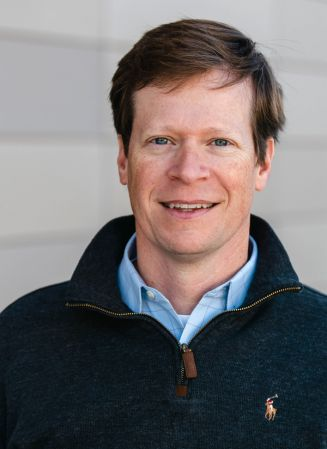
October 22, 2025
Emergence of Granular Dynamics in Collections of Robotic Microrollers
James Gilchrist, Lehigh University
4:00 p.m., Larrañaga Engineering Auditorium
Abstract: The field of miniaturized robots is advancing quickly for the purpose of developing noninvasive medical procedures and exploration of geometrically complex systems. This experimental research explores the collective response of field-responsive microrollers. These microrollers are manipulated by rotating magnets that generate torque at the particle-scale and influence magnetic particle-particle attraction that influence friction in the system. Our lab has developed techniques to make large quantities of these microrollers and we study their bulk properties. The resulting kinematics are swarms of microrollers whose motion behave as granular flows that readily flow uphill with a negative angle of repose, driven by a negative coefficient of friction, and generate uncommon collective behavior that can only be understood in the context of granular dynamics. Several novel applications will be demonstrated that are achieved through their collective granular-like behavior.
Bio: James Gilchrist is the Ruth H. and Sam Madrid Professor of Chemical and Biomolecular Engineering at Lehigh University. He oversees the Laboratory for Particle Mixing and Self-Organization, where he and his team investigate rheology and assembly of colloidal and granular systems. Researchers in the lab identify prototypical complex systems including suspension transport in chaotic flows, suspension rheology and microstructure, convective deposition, and functional coatings. Gilchrist received his B.S. in Chemical Engineering from Washington University in St. Louis and Ph.D. from Northwestern University. Prior to joining the faculty of Lehigh University in 2004, he was a postdoctoral research associate in the Department of Materials Science and Engineering at University of Illinois. Gilchrist was a visiting professor in the Department of Chemical Engineering at the California Institute of Technology for the 2011-2012 academic year and a Visiting Professorial Fellow at University of New South Wales in 2016. In 2022, Gilchrist was elected a Fellow of the American Institute of Chemical Engineers.

October 15, 2025
Chronic Low Dose Exposures of Cadmium and Hyperglycemia Drives Dysfunctional Hepatic Mitochondrial Biogenesis and Dynamics
Rahul Kumar
4:00-4:30 p.m., Larrañaga Engineering Auditorium
Abstract: Metabolic (Dysfunction)-Associated Fatty Liver Disease (MAFLD) is a leading cause of chronic liver disease (CLD) and mortality worldwide. In the southwestern United States, particularly New Mexico (NM), CLD rates are the highest in the nation (36.4/100,000 in 2022), particularly among the Hispanic and Native American populations for unknown reasons. We hypothesize that environmental exposures (e.g., heavy metals) exacerbate liver dysfunction in individuals with chronic metabolic disturbances including obesity, type II diabetes. Cadmium (Cd), a toxic environmental metal, is associated with obesity, diabetes, and MAFLD, but its chronic effects on hepatic oxidative and mitochondrial homeostasis remain poorly defined. Using chronic low-dose Cd exposure (CLEC) and hyperglycemic (15 mM) conditions for 24 weeks in hepatocyte models (HepG2 and HUH7), we investigated Cd-induced oxidative and mitochondrial injury. CLEC models revealed (i) increased sorafenib-induced mitotoxicity under galactose conditions, (ii) elevated superoxide production amplified by hyperglycemia, (iii) reduced mitochondrial density, altered ΔΨm, and morphological disruption, and (iv) impaired oxygen consumption rate (OCR) and ATP production with unchanged spare respiratory capacity. Chronic Cd and hyperglycemia further caused transcriptional and translational alterations in antioxidant genes and mitochondrial dynamics proteins (Drp1, MFN2, Tomm20), increasing cellular vulnerability. Overall, these findings demonstrate that chronic Cd exposure disrupts hepatic mitochondrial homeostasis and OXPHOS energy cycling, a core mechanism of MAFLD pathogenesis. Our results emphasize that heavy metal pollutants may accelerate metabolic and bioenergetic dysfunction in type II diabetics and obese individuals, highlighting an urgent need for targeted investigation in these at-risk groups.
Bio: Rahul Kumar is a graduate student currently pursuing his Ph.D. in Biomedical Engineering in the lab of Dr. Rama Gullapalli from the department of Pathology. Rahul holds a bachelor’s degree in Biotechnology from Maharshi Dayanand University, India and went on to complete his Master’s (M. Tech) in Bioscience and Bioengineering from the Indian Institute of Technology, Jodhpur, India.
His current doctoral research here at UNM focuses on the impact of environmental pollutants such as heavy metals exposures and microplastic of the liver. His work integrates toxicology, liver biology, and metabolic dysfunction, aiming to understand how environmental pollutants contribute to insulin resistance and liver disease.
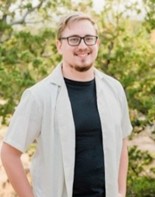
Investigating Hydrothermally Stable Single Atom Copper Catalysts for Upgrading Ethanol to Sustainable Aviation Fuel
Jesse Larence
4:30-5:00 p.m., Larrañaga Engineering Auditorium
Abstract: The aviation industry is increasingly pursuing alcohol-to-jet (ATJ) fuel technologies as a viable strategy to reduce carbon emissions and transition toward sustainable fuels. Among various catalytic pathways, upgrading ethanol to sustainable aviation fuel (SAF) has garnered significant interest. Metallic copper (Cu) is a promising catalyst for this reaction but often suffers from deactivation due to sintering and carbon deposition arising from side reactions during ethanol conversion. In contrast, single atom Cu catalysts have demonstrated exceptional thermal stability, up to 800 °C in air, improving resistance to both sintering and coking, though their catalytic behavior in these reactions remains less understood. In this presentation, we employ a facile sol-gel synthesis to achieve a high loading (5 wt%) of bulk single atom Cu stabilized on CeO₂. This system is used to investigate the sintering and structural evolution of ionic Cu species under hydrothermal aging conditions that mimic the ethanol upgrading reaction involving H₂ and steam. A combination of transmission electron microscopy (TEM), CO diffuse reflectance infrared Fourier transform spectroscopy (CO-DRIFTS), X-ray absorption spectroscopy (XAS), and complementary characterization methods were used to investigate the coordination environment and stability of Cu sites under both simulated and real reaction conditions.
Bio: Jesse Larence is a third-year Ph.D. student in Chemical Engineering at the University of New Mexico. He conducts research in Professor Abhaya Datye’s heterogeneous catalysis group, focusing on the development and characterization of single-atom catalysts to enhance stability in biomass upgrading and ethylene purification processes.
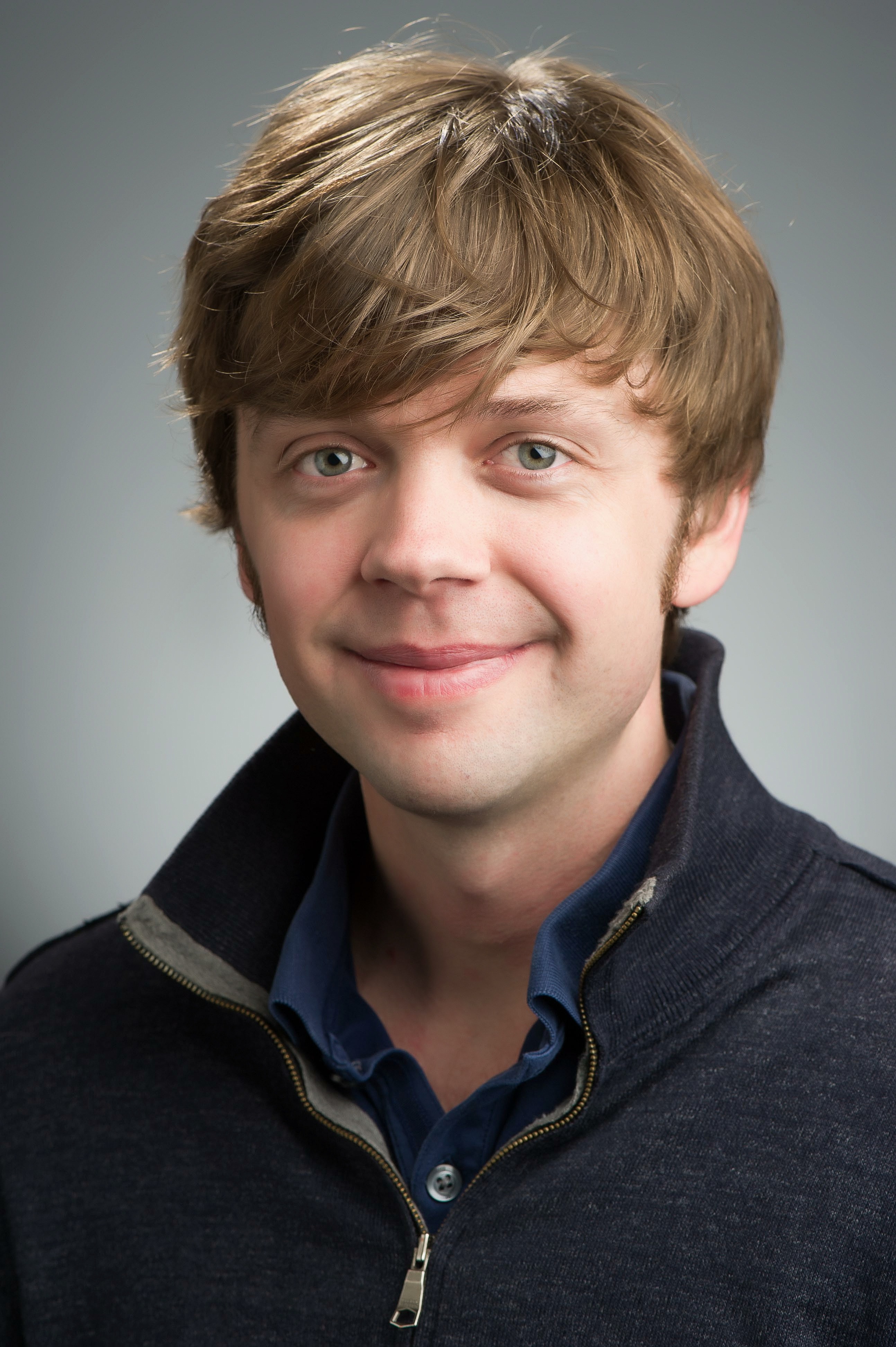
October 8, 2025
Lignin conversion to performance-advantaged fuels, chemicals, and polymers
Gregg T. Beckham, NREL
4:00 p.m., Larrañaga Engineering Auditorium
Abstract: Terrestrial plants harbor renewable carbon resources in their cell walls that can directly contribute to decarbonization of the transportation and materials sectors, but the heterogeneous, aromatic lignin polymer found in plants has long obstructed both natural- and humankind-driven endeavors to deconstruct plant biomass to valuable products. However, viable methods to valorize lignin are essential to ultimately enable second-generation biorefining, given that lignin can comprise up to 40% of the carbon in lignocellulose, but today it is merely burned for low-value heat and power. To this end, this talk will cover our efforts (with many collaborators) to separate the lignin polymer from the plant cell wall and use both chemical and biological catalysis to convert it into molecules and polymers that are either drop-in replacements for products sourced from fossil carbon today or that exhibit performance-advantaged properties relative to petrochemical incumbents. Specifically, we are focused on catalytic oxidation to depolymerize lignin into bio-available intermediates coupled to metabolic engineering approaches that convert mixtures of aromatic compounds to single products, which can find use in performance-advantaged biopolymers. In parallel, we are also developing and scaling methods to remove lignin from the cell wall through reductive catalysis and to selectively conduct hydrodeoxygenation to produce sustainable aviation fuel blendstocks.
Bio: Gregg T. Beckham is a Senior Research Fellow and Group Leader at NREL. He received his PhD in Chemical Engineering at MIT. He works with an interdisciplinary team at NREL on the development of sustainable processes and products in the areas of biomass conversion and plastics recycling and redesign.
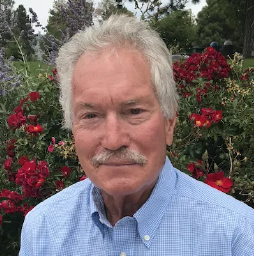
October 1, 2025
Neutron Scattering for Science: A Primer
Rex Hjelm, Researcher, New Mexico Consortium
4:00 p.m., Larrañaga Engineering Auditorium
Abstract: Presenting a high level over view of neutron scattering techniques and the relation to facilities available at Oak Ridge National Laboratory with an emphasis of those techniques most closely addressing problems in biological sciences and electro-chemistry.
Bio: Dr. Rex Hjelm is currently at the New Mexico Consortium and at the Earth and Environmental Sciences Division at Los Alamos National Laboratory, where his current work is on fuel cell polymer materials physics, bio-sciences and geophysics. From 2018-2019 he was a “Brain Pool” Fellow of the Korean National Research Foundation working at the Korean Institute for Energy Research on fuel cell ionomer physics. Previous to his present positions Dr. Hjelm was a senior scientist at the Los Alamos National Laboratory, where he was an internationally recognized authority in the uses of scattering in materials structure. He has been presented with six DOE Awards of Excellence in Research for his work in materials science and was awarded Office of Basic Energy Sciences Outstanding Mentor Award. He has 170 published articles and 170 invited presentations in biophysics, physics, materials science, colloids and polymers, geoscience, scattering instrumentation and methods and computer code development. He has authored and edited four major reports in neutron scattering facility instrumentation and neutron scattering instrument design and authored and edited three volumes on composite materials. Dr. Hjelm holds a BSc in genetics (ScL) from the University of California, Berkeley and a Ph.D. in Biochemistry from the Johns Hopkins University. He held NATO and Jane Coffin Childs Postdoctoral Fellowships in the UK in biophysics and a Howard Hughs Fellowship in Biophysics and Medicine at Johns Hopkins. He has held faculty positions in Genetics, Medicinal Chemistry and pharmaceutics at the University of Illinois and in Chemical and Environmental Engineering at the University of California, Riverside.
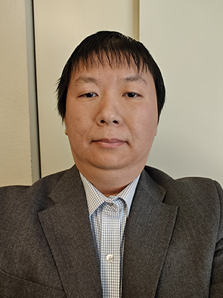
September 24, 2025
Additive Manufacturing as Prototyping Method for Solid-State Electrochemical Methane Sensors
Lok-kun Tsui, UNM
4:00 p.m., Larrañaga Engineering Auditorium
Abstract: Methane (CH4) emissions from the natural gas industry are a major contributor to global climate change with CH4 having approximately a 25x higher global warming potential compared with CO2. The US has over 300,000 miles of pipeline to transport natural gas from extraction to refining and then eventually to the end user. Much of the infrastructure is also located in rural and economically disadvantaged locations which have limited resources for expensive sensing solutions. There is a need to provide a low cost continuous monitoring solution to mitigate the impact of the natural gas industry, providing early warning of leaks so they can be repaired quickly. In this talk we will present how we used additive manufacturing of ceramics as a rapid prototyping approach for the development of solid-state mixed potential sensors. The sensitivity and selectivity was engineered by electrode composition and selection of low ionic conductivity substrates, which produced sensors with sub-5-ppm limit of detection for CH4. We integrated the sensors with machine learning algorithms for automatic signal deconvolution and an internet-of-things platform for field portable data collection. We then performed field testing to measure the near surface methane concentration from underground pipelines in real world conditions at CSU’s METEC facility. We were able to show that we could quantify the distribution of methane near the emission point with comparable accuracy to sophisticated infrared gas analyzers with our sensor technology. After successfully validating the technology, we demonstrated that we could transition the additive manufacturing process to conventional manufacturing for scale-up production.
Bio: Lok-kun Tsui is a research associate professor with the Center for Micro-Engineered Materials at UNM. He obtained his BS in Physics from James Madison University, and his MS and PhD in Materials Science and Engineering from the University of Virginia. He has been with CMEM since 2015 and has collaborations with Air Force Research Laboratory and Sandia National Laboratories. His research interests are electrochemistry for environmental monitoring, sensors and machine learning, electrodeposition, and additive manufacturing of electronics.

September 17, 2025
Selective Catalytic Transformations of Polyolefins
Aaron Sadow, Ames National Lab and Department of Chemistry, Iowa State University
4:00 p.m., Larrañaga Engineering Auditorium
Abstract: We are investigating catalytic materials and methods that regulate the cleavage of C–H bonds or C–C bonds in polyolefins, to introduce functional groups at selected positions or to create narrow distributions of shorter, partially deconstructed chains. This approach involves the design and synthesis of 3D porous inorganic metal oxide architectures which contain catalytic sites in well-defined positions in the material, along with spectroscopic investigations and theoretical models of polymer adsorption and translocation in the pores. In parallel, we are developing catalytic sites and reactions that break C–C and C–H bonds in aliphatic hydrocarbon polymers. As these catalytic sites are incorporated into 3D architectures and studied in polyolefin deconstruction reactions, our team is developing theoretical, kinetic models and in situ spectroscopic methods for studying the ‘macromolecular’ mechanisms that influence the average chain lengths of products and the dispersity of product distributions.
Such approaches using micro or mesoporous materials can lead to processive catalysis, whereby a polymer chain is adsorbed into the pores of the inorganic oxide and is successively cleaved into smaller fragments without release of the ever-shortening polymer chain. Nanoparticles, responsible for C-C cleavage, localized in the pores at uniform distances from the pore mouth, then cleave polyolefin chains into semi-regular smaller chain lengths. We will present our studies of these architectures and catalytic reactions in the selective deconstruction of polyolefins.
Bio: Currently David C. Henderson Chair of Chemistry and Director of the Institute for Cooperative Upcycling of Plastics (iCOUP), a DOE-BES funded EFRC.

September 10, 2025
Understanding the Flow Behavior of Complex Non-Newtonian Fluids in Curved (Coiled) Tubing
Subhash Shah
4:00 p.m., Larrañaga Engineering Auditorium
Abstract: Coiled Tubing (CT) services are one of the fastest growing oilfield technologies. CT has been widely used in well drilling, wellbore cleanouts, stimulation, logging, perforation, and many other well interventions. The success of a treatment profoundly depends on the proper selection of fluids and their properties. Even though fluids are widely used in all CT services, little attention has been paid to thoroughly evaluate and understand the behavior of complex fluids. In many instances the cause of an unsuccessful treatment is the failure of our understanding the true behavior of fluid.
Fluid flow in CT is significantly different than straight pipe because of coiled tubing curvature and secondary flows it generates. Fluids in CT experience a different level of shear and turbulent intensity. It has been shown that fluids in CT exhibit significantly higher frictional pressure losses (up to 200%), less drag reduction, severe pipe erosion (with slurries), greater fluid degradation due to shear, etc. when compared to straight pipe. These characteristics are dependent on fluid type and concentration, CT size and dimensions, operating parameters such as temperature and pressure, shear rates, pH, salinity, density, and pipe roughness.
The lecture will highlight research findings with several fluids and present appropriate correlations for their proper hydraulics predictions. Case studies of wells fractured using CT will be provided to demonstrate the application of the correlations used in hydraulics calculations.
Bio: Dr. Subhash Shah, Ph.D. is an Emeritus Professor in the Mewbourne School of Petroleum and Geological Engineering at the University of Oklahoma. He retired from OU after serving 22 years as Stephenson Chair Professor and as the Director of OU’s Well Construction Technology Center. He also served for 6 years as Shell Chair Professor and Chief Mentor in the School of Petroleum Technology, Pandit Deendayal Petroleum University, India. Dr. Shah is one of the world leaders in hydraulic fracturing, horizontal/multilateral well completions/stimulation, and coiled tubing technology. He has a distinguished career in the oil and gas industry that spans over 48 years: 18 years with Halliburton as “Distinguished Technical Member” and 30 years in academia/consultant. He is recognized as the Society of Petroleum Engineers “Distinguished Member” and as “Distinguished Lecturer.” He is a recipient of “SPE Completions Optimization and Technology” award. He is a “Fellow” of the American Institute of Chemical Engineers. Dr. Shah is a “Distinguished Alumni” of the College of Engineering and “Alumni Emeritus” of The University of New Mexico.
Dr. Shah holds a B.E. from M.S. University of Baroda, India, and M.S. and Ph.D. from University of New Mexico, USA, all in chemical engineering. His research has resulted in more than 300 technical publications in over 35 international journals. He has written five chapters in technical books and is a co-author of two books.
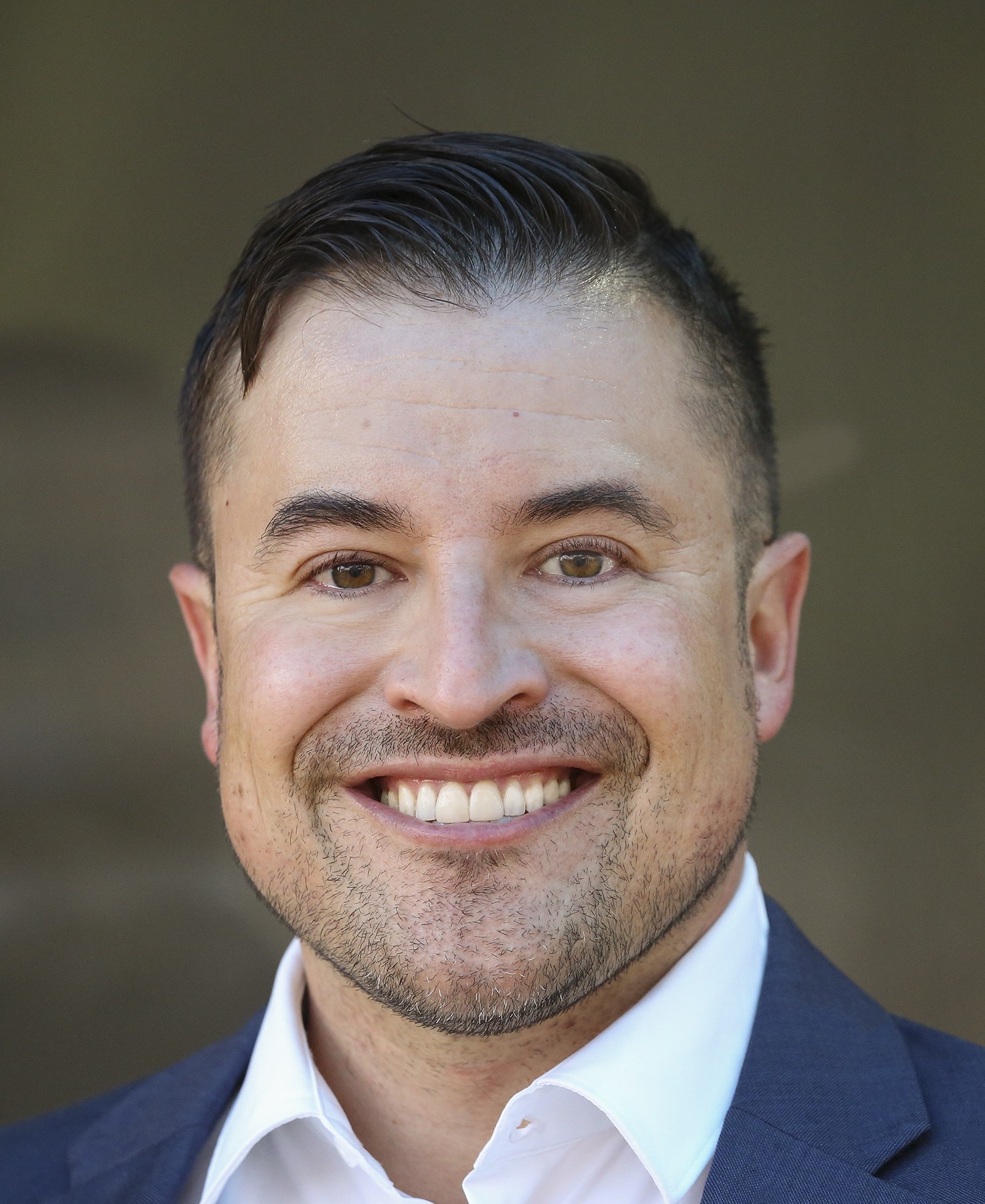
September 3, 2025
Solar Thermal Energy Storage Technologies for the 21st Century
Kenneth Armijo, Sandia National Laboratories
4:00 p.m., Larrañaga Engineering Auditorium
Abstract: Concentrating solar power (CSP) systems generate solar energy by using mirrors or lenses to concentrate a large area of sunlight, or solar thermal energy, onto a small area. Thermal Energy Storage (TES) systems, which use molten salt, can be used to enhance utilization efficiencies and performance, particularly at high temperatures. The primary advantage of using TES over photovoltaics (PV) and batteries is that as a thermal technology, running a conventional thermal power block, a CSP or Nuclear Energy (NE), small modular reactor (SMR) system can store the heat of solar energy in molten salts or other next generation media, which enables these plants to continue to generate electricity whenever it is needed, whether day or night. TES enhances dispatchability form solar or NE to be a competing form of base-load power with other current energy processes that can have a negative impact on the environment. This technology is also particularly valuable in places where there is already a high penetration of PV because an evening peak is being exacerbated as PV ramps down at sunset. Production potential of solar energy in southwestern states stands apart from the rest of the U.S. where states like New Mexico have the incredible potential for producing solar energy, in addition to other commercial products such as ammonia, hydrogen and fresh water from desalination with this resource. In this presentation, Dr. Kenneth Armijo, will discuss the processes and importance of producing energy from solar and nuclear energy and how TES stands to significantly impact base-load energy production for the U.S. and the world.
Bio: Dr. Kenneth Armijo is a systems engineering staff member and Test Director who leads molten salt, molten alkali metals & controls R&D at the National Solar Thermal Test Facility (NSTTF). His research interests are in alternative energy technologies and sustainability, as they pertain to scientific and technological innovation, business and policy. Dr. Armijo holds a Ph.D. in Mechanical Engineering from the University of California, Berkeley with minors in Energy and Resources, and business credentials in Management of Technology from Berkeley's Haas School of Business. Presently, Dr. Armijo’s research in concentrating solar power (CSP) consists of system design for high-temperature (>720 °C) thermodynamic and commercial R&D systems, employing ternary chloride molten salts and alkali metals (sodium) as the heat transfer fluid. His research has also consisted of falling particles for centralized concentrating solar receivers. He also leads research activities pertaining to solar Stirling Engine applications as well as for solar reactor R&D and high-flux materials characterization. Dr. Armijo also serves as a lead Test Director for high-temperature materials research for power towers and solar furnace investigations.

August 27, 2025
Chemical Engineering as the Connecting Piece: Examples from Nuclear and Agriculture
Catherine Brewer, Professor and Associate Academic Department Head, Chemical & Materials Engineering, New Mexico State University
4:00 p.m., Larrañaga Engineering Auditorium
Abstract: The NuChemE Pipeline project, short for “Evaluating New Materials and Processes for Radioactive Tank Waste Processing: Workforce Development in f-Element Chemistry, Nuclear Chemical Engineering, and Supply Chain Management” is a 3-year, multi-institution grant funded by the Department of Energy’s Office of Environmental Management (DOE-EM). Dr. Brewer will introduce how gadolinium (Gd) can be sourced domestically from coal fly ash and used to stabilize high-level waste in clean-up efforts at Manhattan Project/Cold War uranium and plutonium facilities. The grant includes interdisciplinary research and capacity building for f-element (lanthanide and actinide) separations and supply chain management to support radioactive tank waste management at the Savannah River Site. The education components at NMSU include expansion of the Nuclear Chemical Engineering minor, new courses: CHEM 473 Radiochemistry and CHME 370V Discovery & Uses of Radioactive Materials, and a summer hands-on lab training and travel program.
On the agriculture side, chemical engineering represents the processing part of making value-added products from underutilized biomass. Dr. Brewer will give examples of how her group studies mosquito repellents from plant extracts; chemicals and fibers from hemp wastes; and renewable energy and biochars from forestry biomass.
Bio: Before joining NMSU in 2013, Catherine “Catie” Brewer completed a B.S. in Chemistry at Indiana U. of Pennsylvania, a Ph.D. in Chemical Engineering and Biorenewable Resources & Technology at Iowa State University, and a postdoc at Rice University. She is currently a John Kaichiro & Tome Miyaguchi Nakayama Endowed Professor in Engineering for interdisciplinary research and education. Dr. Brewer served as associate editor for two years and co-editor-in-chief for two years for Renewable & Sustainable Energy Reviews. She has also served as community program chair and other leadership roles in the American Society of Agricultural & Biological Engineers (ASABE). Her research interests include biomass utilization, biochar, soil and water remediation, renewable fuels, sustainable agriculture, and uses of radioisotopes. She teaches introduction to chemical engineering calculations, senior capstone design, and electives related to brewing and nuclear chemical engineering.
